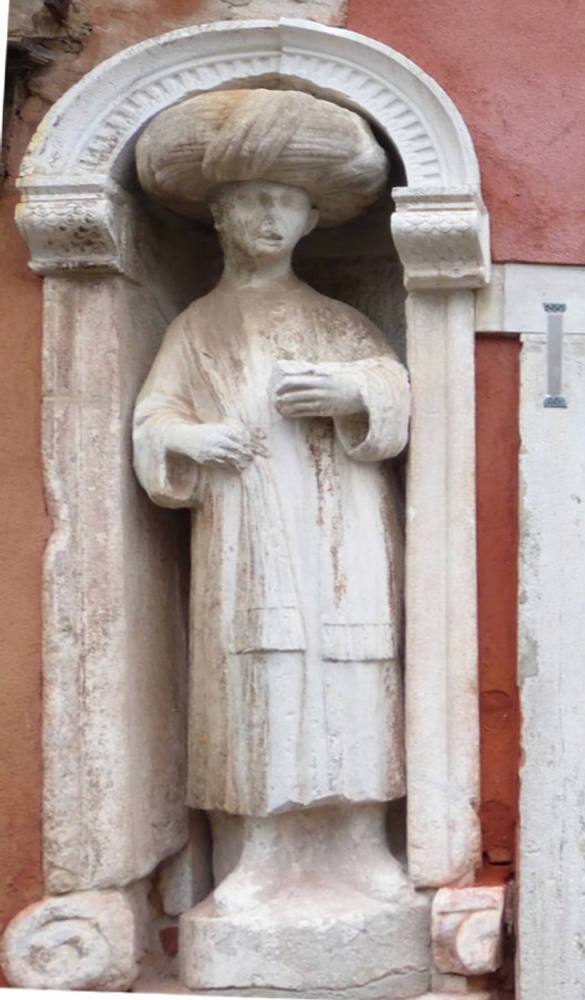

Left: Tintoretto’s House. Right: Statue of a Moor on the wall outside Tintoretto's house in the Campo dei Mori. It is one of several "Moorish" statues commemorating brothers from the Pelepponese who lived and probably traded in Venice in medieval times. [Click on images to enlarge them.]
Jean-Paul Sartre considered Tintoretto to be "the most characteristic and devoted of Venice's native sons" (qtd. in Palnt 335). A great admirer of the artist, John Ruskin himself does not mention his house either in The Stones of Venice or in his other works. However, the editors of the Library Edition, E. T. Cook and Alexander Wedderburn, mention it when discussing Ruskin’s drawing of the Palazzo del Cammello: “The house is so called from the camel with a man in oriental costume sculptured on it. It is situated on the Canale della Maria dell’ Orto, and is one of three palaces built by the brothers Mastelli, who came from the Morea. Tintoret’s house, close by, is another of them” (9.li). — added by George P. Landow
Related material
- Il Palazzo del Cammello (Ruskin’s drawing)
- John Ruskin, Holman Hunt, Tintoretto, and the Origin of the Pre-Raphaelite Brotherhood
More of Ruskin's Venice
- St. Mark’s Cathedral
- The Palazzo Ducale, Venice
- The Scuola de San Rocco
- On the Grand Canal
- Leaving the Grand Canal
- On the way to Venice from the mainland
- Venice: Details and Corners
Photographs by the author. [You may use these images without prior permission for any scholarly or educational purpose as long as you (1) credit the photographer and (2) link your document to this URL in a web document or cite the Victorian Web in a print one.]
Bibliography
Plant, Margaret. Venice: Fragile City, 1797-1997. New Haven and London: Yale University Press, 2002.
Ruskin, John. The Works. Ed. E. T. Cook and Alexander Wedderburn. “The Library Edition.” 39 vols. London: George Allen, 1903-1912.
� � �
Last Modified 2 April 2020